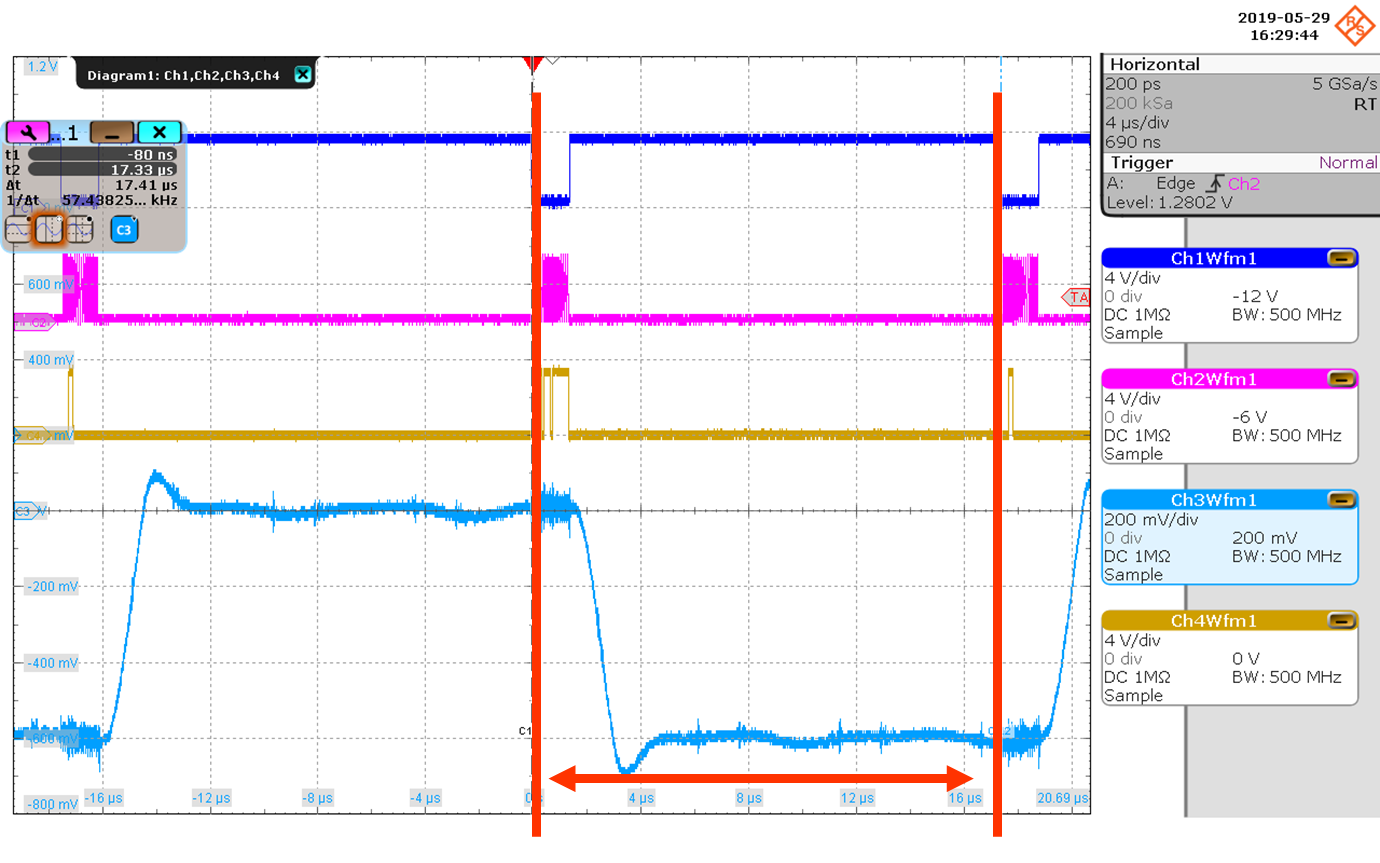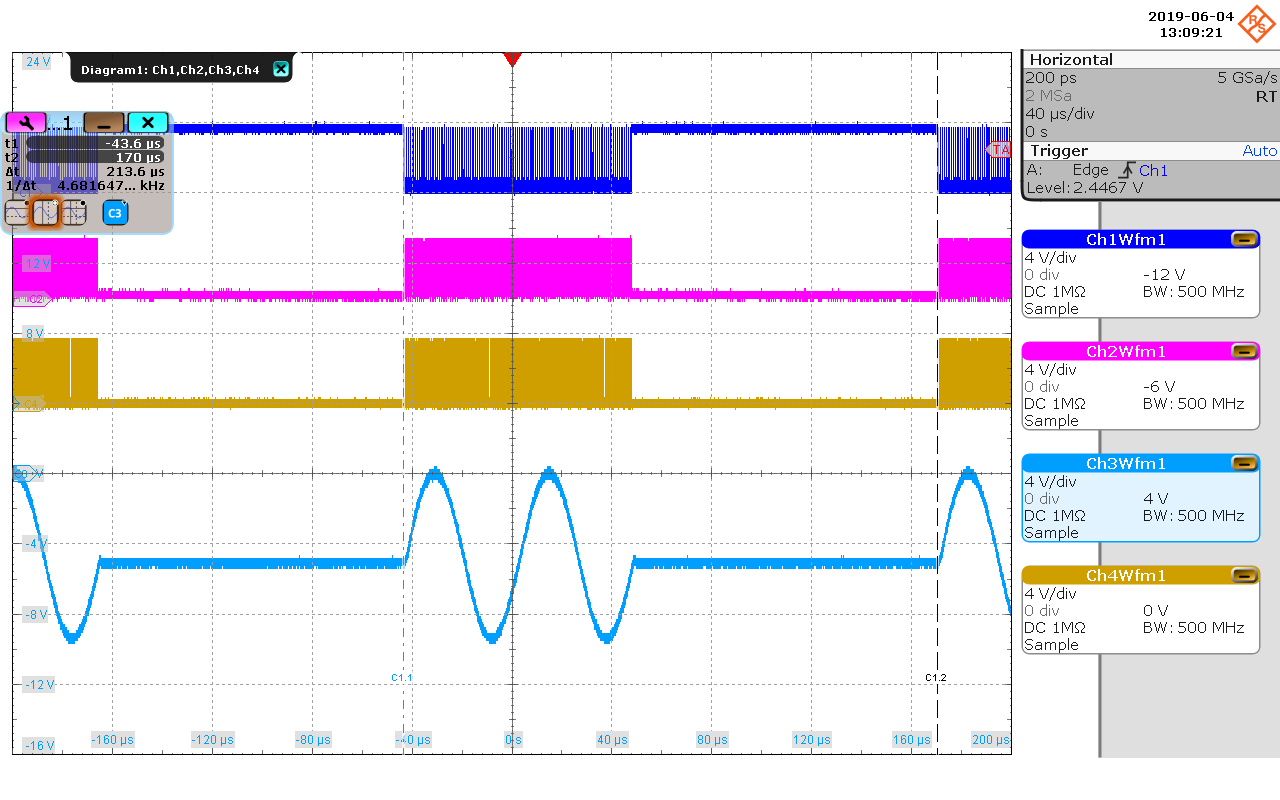Other Parts Discussed in Thread: DAC7811EVM,
Tool/software: TI-RTOS
Hi,
I'm trying to use CC1310 to control my DAC7811EVM,
so I used SPI MOSI to send my digital value to DAC7811EVM.
The purpose in here was repeated this process as fast as possible.
But I found that CC1310 over a complete SPI transfer to next transfer had a 17.43us delay.
Could it had any way to reduce this transfer gap?




